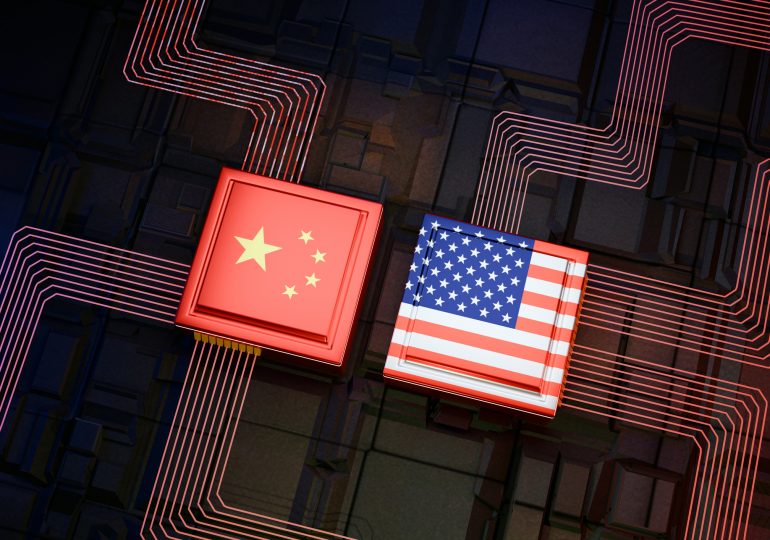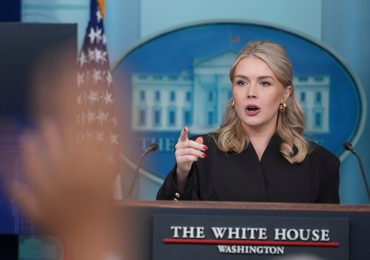The Biden Administration’s move on Jan. 13 to curb exports on the advanced computer chips used to power artificial intelligence (AI) arrived in the wake of two major events over the Christmas holidays that rattled the world of AI.
First, OpenAI released its latest model, o3, which achieved an 88% on a set of difficult reasoning tests on which no AI system had previously scored above 5%. “All intuition about AI capabilities will need to get updated” in light of the results, said Francois Chollet, a former AI researcher at Google and a prominent skeptic of the argument that “artificial general intelligence” (AGI) would be achieved any time soon.
[time-brightcove not-tgx=”true”]
Second, the Chinese company DeepSeek released an open-source AI model that outperformed any American open-source language model, including Meta’s Llama series. The achievement surprised many AI researchers and U.S. officials, who had believed China lagged behind in terms of AI capabilities. Somehow, DeepSeek had managed to create a world-class AI model in spite of a global embargo, led by the U.S. government, on the sale of advanced AI chips to China.
Taken together, the two developments made something clear: “I think AGI will probably get developed during this president’s term,” OpenAI CEO Sam Altman told Bloomberg in January, meaning that technology powerful enough to carry out economically valuable work and make new scientific discoveries by itself would emerge in the next four years under U.S. President-elect Donald Trump. What’s more: China appeared to be catching up in the race to get there first.
For some U.S. officials, those realizations only underlined what they had been arguing for years: restricting China’s access to AI was now essential for U.S. national security. Whichever superpower achieves AGI first, the thinking goes, is likely to obtain a decisive strategic advantage, reap new scientific discoveries, wield powerful new weapons and surveillance technologies, and leave its competitor’s economy in the rear-view mirror.
Read More: AI Models Are Getting Smarter. New Tests Are Racing To Catch Up.
Under Biden, the U.S. government had intensified a policy that began during Trump’s first term: using the power of export controls to limit the number of advanced chips that China could obtain to impede its attempts to reach parity with the U.S. on AI. Despite measures that made the export of advanced chips to China illegal in 2022, Beijing had nevertheless succeeded in stockpiling thousands of chips to build its own AI systems thanks to an international smuggling network. The pure power of DeepSeek v3 strongly suggested that those chips were being used to train AI at the cutting edge.
And so, with just a week until Trump’s return to the White House, the Biden Administration added finishing touches to its existing chip sanctions. The new rules attempt to make it even harder for China to obtain cutting-edge AI chips via smuggling, by establishing new quotas and license requirements for the sale of advanced chips to all but America’s closest allies.
If the Trump Administration does not act to repeal the measure, the policy will take effect in 120 days. “I think it is quite likely that the Trump Administration will find this policy appealing, and the reason is that we are in a critical moment in AI technology competition with China,” says Greg Allen, director of the Wadhwani Center for AI and Advanced Technologies at the Center for Strategic and International Studies (CSIS), a Washington think tank. Contrary to rumors of AI’s progress reaching a plateau, OpenAI’s o3 model shows new capabilities are continuing to emerge rapidly, Allen says, leading many in Washington and Silicon Valley to bring forward their predictions of when they think AGI will arrive. And while Trump himself is unpredictable, many of the aides and policymakers set to occupy senior positions in his Administration are China hawks. “It matters a lot that the United States gets there before China,” says Allen, who supports the Biden Administration’s new rules. “It is a pretty decisive move to make life much harder for China’s AI ecosystem.”
Read More: How Sam Altman Is Thinking About AGI in 2025.
Trump will face appeals from those urging him to repeal the new rules. Nvidia, which controls more than 90% of the U.S. AI chip industry, blasted the Biden Administration in a statement, arguing that the restrictions would hand market share to China. “By attempting to rig market outcomes and stifle competition — the lifeblood of innovation — the Biden Administration’s new rule threatens to squander America’s hard-won technological advantage,” said the statement, authored by Nvidia’s president of government affairs Ned Finkle. The company also flattered Trump in the same statement, crediting him with “laying the foundation for America’s current strength and success in AI.”
Allen agrees that they might push buyers toward China. But not fast enough, he says. It takes five to 10 years for a chipmaker to turn even huge investments into machines capable of making advanced new chips, and China simply doesn’t have that time, assuming AGI is on the horizon. “They are really stuck because they cannot get the advanced equipment that they need,” Allen says. “The alternative to American AI chips isn’t Chinese AI chips. It’s no AI chips.”
Leave a comment








